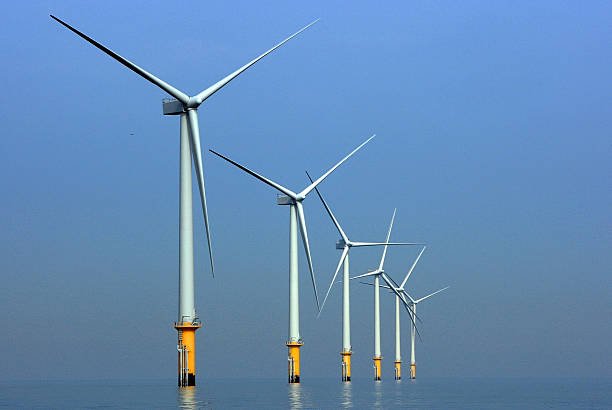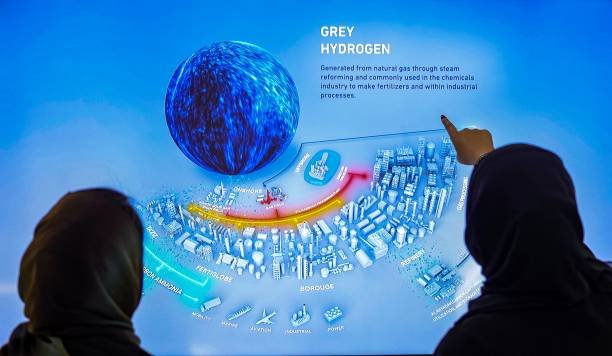Earth Day: Special Focus on Climate Solutions, Innovators & Leaders
On this Earth Day, we are showcasing the many solutions that are available to us as well as the innovators and women that are leading the charge. We’re all about Climate Optimism here at TBG. With that in mind, the TBG Purpose team has curated a number of articles.
NRDC
”What Are the Solutions to Climate Change?”
Thinking about climate change can be overwhelming. We’ve been aware of its causes for decades now, and all around us, we bear witness to its devastating effects on our communities and ecosystems.
But the good news is that we now know exactly what it will take to win the fight against climate change, and we’re making measurable, meaningful progress. Game-changing developments in clean energy, electric vehicle technology, and energy efficiency are emerging every single day. And countries—including Canada, China, India, and the United States—are coordinating and cooperating at levels never seen before in order to tackle the most pressing issue of our time.
The bottom line: If the causes and effects of our climate crisis are clearer than ever, so are the solutions.The single-most important thing that we can do to combat climate change is to…” (Click here to continue.)
Fast Company
”These are the 76 Climate Solutions we Need to Scale Up Right Now to Have a Chance”
An important thing to realize for anyone thinking about the climate crisis is that things are not hopeless. In fact, the solutions the world needs to tackle climate change already exist. A new report from the nonprofit Project Drawdown analyzed the potential of dozens of solutions and found that we could reach what the organization calls “drawdown”—the point where greenhouse gas levels in the atmosphere peak and begin to drop—as early as 2040 if all of the solutions are scaled up together.
“We look at individual solutions to climate change that actually exist in the real world,” says Jonathan Foley, executive director of Project Drawdown. “They’re not just in the lab, they’re not a startup somewhere that’s talking about it, but they actually exist in practice today. And we ask fundamental questions like, how big could it be? How effective at removing…” (Click here to continue.)
Concern Worldwide US
”10 Solutions to Climate Change that will Actually Make a Difference”
There are a lot of differing opinions on whether it’s too late to climate change — and, if it’s not the best way of going about it. Some say recycling is useless and that individual action means nothing against the larger policy reforms that need to happen. This is, in part, true — although you should absolutely still be recycling. But it doesn’t tell the whole story, and it doesn’t help those who are currently on the frontlines of the climate crisis. Here, we break down 10 solutions to climate change that will actually make a difference — and how you can help make them all a reality.
1. SHIFT TO RENEWABLE ENERGY SOURCES IN ALL KEY SECTORS
The United Nations identified a six-sector solution to climate change, focusing on actions that can be taken by the energy, industry, agriculture, transportation, nature-based solutions, and urban planning. If all of these actions are completed, the UN Environment Programme estimates we could reduce global carbon emissions by 29 to 32 gigatonnes, thereby limiting the global temperature rise to 1.5º C. One key element of this plan is…. (Click here to continue.)
William Russell
“Greenest Countries – The Most Environmentally Friendly Countries For Green Living”
Sustainability is a hot topic right now and for good reason. Air quality improved over the pandemic and we have a new appreciation for the outdoors and a revived commitment to the planet. Climate awareness is now inarguably mainstream, and being environmentally friendly is important, but where are the world’s greenest and most environmentally friendly countries?
Expats looking for green living now have a number of eco-friendly destinations to choose from. And if you are already an expat, why not see if your country or city makes the top ten best destinations for an eco-friendly living? In this article, we cover everything you need to know about the greenest countries in the world, best places for green living, and share some tips on how to be environmentally friendly and maintain sustainable lifestyle as an expat.
Greenest countries. What are the most environmentally friendly countries for green living?
All 180 countries from Albania to Zimbabwe were graded by The 2020 Environmental Performance Index (EPI) on 32 key sustainability indicators. The EPI scores were… (Click here to continue.)
Yale Climate Connection
“Twelve Books about Climate Change ‘Solutions’ that Belong on Your Summer Reading List”
Summer is a time for big projects, especially those that involve fixing or upgrading the exteriors of our dwellings or the landscapes that surround them. Summer is also a time for getting in shape. Consider also including climate change in your summer reading plans. The books gathered here offer ways to improve one’s health and well-being while reducing one’s impacts on the planet’s climate. They also show how climate change can effectively be addressed by businesses, community groups, corporations, cities, and governments. Make a list … and then make a difference.
The descriptions of the 12 books listed below are drawn from copy provided by the publishers. Whenever two dates of publication are listed, the second is for the paperback edition of the book.
Being the Change: Live Well and Spark a Climate Revolution, by Peter Kalmus (New Society Publishers 2017, 384 pages, $21.99 paperback)
Alarmed by drastic changes now occurring in the Earth’s climate systems, Peter Kalmus, a climate scientist and suburban father of two, embarked on a journey to change his life and the world. He began by bicycling, growing food, meditating, and making other simple, fulfilling changes. Ultimately, he slashed his climate impact to…. (Click here to continue.)
Reuters
”Twenty-five Trailblazing Women Leading the Fight against Climate Change”
With so many extraordinary women engaged in the battle against climate change, the biggest task in compiling Reuters Impact's list of trailblazing women for International Women's Day was whittling down our long list to only 25. We reluctantly decided not to include the likes of Christiana Figueres, Greta Thunberg, and U.N. Environment Programme chief Inger Andersen, who already have a high global profile for their work, in order to shine the light on women whose contributions may have flown under the radar. We’ve included activists and academics, corporates and entrepreneurs, women of different ages working in finance and policymaking from around the world. And of course, the women we’ve named here are just the tip of the iceberg. There are many, many thousands of women working at the coalface of climate action whose achievements deserve to be recognised and celebrated.
Marina Silva, environment minister of Brazil
Brazil’s new environment minister is the daughter of poverty-stricken Amazonian rubber tappers. As a teenager, Silva lost her two sisters and mother to disease introduced after bulldozers arrived to construct a highway near their hamlet. She founded the independent trade union movement with Chico Mendes, and in the 1980s the pair began… (Click here to continue)
MIT Science, Risk & Solutions
“A Brief History of Climate Science/What can we do?”
With current technology, guess how much of our energy would need to be non-emitting (renewables, nuclear, etc.) by 2050 to stay within 2ºC of warming?
Which solutions we deploy to deal with climate change is not decided by scientists, engineers, or economists—it’s decided by society as a whole. After we understand the climate risks and the options for dealing with them, it’s up to us to choose how much risk we’re willing to assume on behalf of future generations, and therefore which actions to take.
This is a terrifically difficult decision because the costs of action may be high and those paying them are not likely to reap the benefits themselves. Indeed, there are few historical examples of civilizations consciously making sacrifices on behalf of descendants two or more generations removed. Yet, if we are to stave off the worst impacts of climate change, this generation must decide what actions it will take, and the following chapter briefly introduces the kinds of large-scale technological solutions that are available to us.
Options for dealing with climate change fall into three broad categories: curtailing the emissions of greenhouse gases and/or taking greenhouse gases out of the atmosphere (mitigation), learning to live with the consequences (adaptation), and engineering our…. (Click here to continue.)
Yale School of the Environment
“Conserving Wildlife Can Help Mitigate Climate Change”
Solving the climate crisis and biodiversity crisis are not separate issues. Animals remove billions of tons of carbon dioxide each year. Restoring species will help limit global warming, new science reveals.
Protecting wildlife across the world could significantly enhance natural carbon capture and storage by supercharging ecosystem carbon sinks, a new study led by Yale School of the Environment Oastler Professor of Population and Community Ecology Oswald Schmitz has found.
The study, published in Nature Climate Change and co-authored by 15 scientists from eight countries, examined nine wildlife species — marine fish, whales, sharks, grey wolves, wildebeest, sea otters, musk oxen, African forest elephants, and American bison. The data shows that protecting or restoring their populations could collectively facilitate the additional capture of 6.41 billion tons of carbon dioxide annually. This is 95% of the amount needed every year to meet the Paris Agreement target of removing enough carbon from the atmosphere to keep global warming below the 1.5-degree Celsius threshold.
"Wildlife species, throughout their interaction with the environment, are the missing link between biodiversity and climate," Schmitz says. "This interaction means rewilding can be among the best..” (Click here to continue)
Carbon Brief
“Guest post: How can nature-based solutions help cities achieve their climate goals?”
Two things are clear from the recent UN climate change and biodiversity summits: “nature-based solutions” appear here to stay, and not everyone is happy about it.
Delegates fought fiercely over the inclusion of these words in the outcomes of the leading intergovernmental processes on both climate change and biodiversity governance. But can research help identify and clarify points of tension in how nature-based solutions (NBS) are used? In our new paper in Nature Sustainability, we tried to do just this.
Defining ‘nature-based solutions’
When I talk about my research on NBS to people, I often get puzzled looks. Even if they’ve heard of the phrase, people find it to be such a vague term that they often do not really know what it means. What counts as “nature” and which problems need “solutions” is up for interpretation – and not everyone agrees.
The International Union for the Conservation of Nature (IUCN) defines NBS as “actions to protect, sustainably manage and restore natural and modified ecosystems that… (Click here to continue.)
EDITOR’S NOTE: TBG Purpose is a leading Sustainability/ESG partner for corporations, institutions and governments. TBG Purpose provides an integrated set of solutions and enables organizations to meet their Sustainability/ESG objectives in line with global reporting standards and frameworks. Get in touch with our team for a free TruePurpose Sustainability Assessment and get out your TruePurpose Score.




